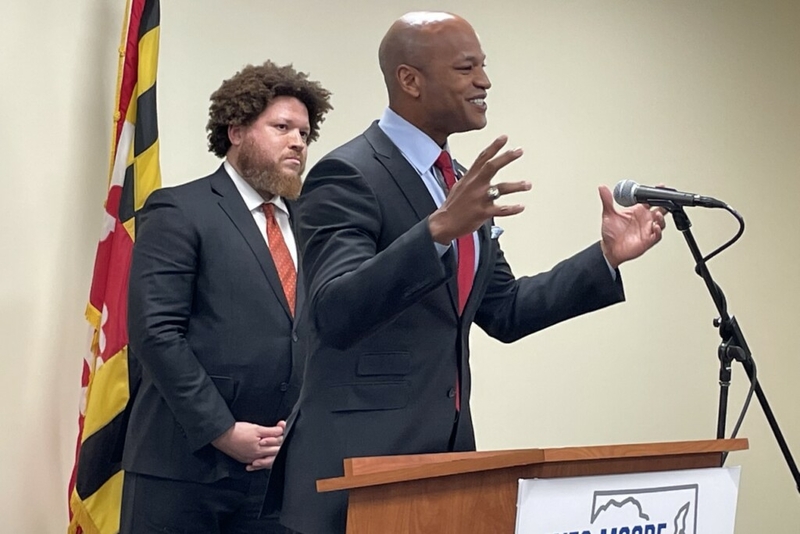Kalman Hettleman: Blueprint Blues — Opportunity and equity for our schoolchildren may be slipping away

The Blueprint for Maryland’s Future has been widely heralded as the nation’s boldest plan for school reform. And for good reason: it raises expectations and resources, and surpasses all other states in adding crucial elements to school funding formulas — like early childhood programs, higher teacher pay, and funding for schools with high concentrations of poverty.
Marylanders are true believers. In polling just before this year’s elections, only 2% of voters listed schools as an issue that was uppermost on their minds.
Yet, the Blueprint has had some crucial design flaws from the start. I wrote in August 2020 that “in many ways, [the Blueprint] is inadequate, inequitable and not up to the challenges.” These shortcomings have now, unfortunately, come home to roost in the draft implementation plan just released by the Blueprint Accountability and Implementation Board.
First and foremost, the draft lacks basic equity. Its over-arching expected outcome is that “nearly all” students will succeed, but this is a disastrous retreat from the standard of adequacy for all mandated by the Maryland Constitution and incorporated in the prior Bridge to Excellence Act. “Nearly all” leaves out large numbers of students who the AIB assumes will not achieve success, even by 2032. Since these students are disproportionately poor and of color, the inequity is self-evident.
The AIB’s defense is that adequacy for all is unrealistic. However, this claim is unsupported by any evidence. Does anyone doubt that students who are poor and of color are capable of meeting standards if they receive adequate and equitable instruction?
Yet, the plan reflects the harsh reality that the Blueprint is underfunded and adequate and equitable instruction is not available to all. The umbrella Coalition for the Blueprint states that the “nearly all” language “provides perfect cover for educational inequity to thrive and lends the impression that the AIB does not believe all children in Maryland to be capable of learning, growing, and excelling in its public schools.”
While no one can guarantee that any percentage of children will succeed, there is a constitutional and moral duty to provide 100% of students with the opportunity to succeed.
Of course, the members and staff of the AIB are wholeheartedly committed to the best interests of all students. Yet, the deck has been stacked against the AIB because there is not enough funding for equitable opportunity for all.
Similarly, the AIB cannot be held primarily accountable for another fundamental flaw in the draft: The draft is mainly an empty shell, lacking regulatory guidance for how even the inequitable “nearly all” expected outcome will be achieved. It lacks program standards, metrics, milestones, and reporting provisions. At its meeting on Nov. 17, the AIB conceded as much, postponing outcome metrics and milestones until August 2023.
The delay is largely the fault of the Maryland State Department of Education. The AIB does not have the time and staff capacity to flesh out implementation steps for the voluminous, complex provisions of the Blueprint. But MSDE does.
Yet, MSDE has come far short. The draft Template for local districts, primarily authored by MSDE, appears to substantially allow the 24 local education agencies to go their own way in writing their own plans. This is a recipe for lowering standards and perpetuates the lack of accountability that has wrecked prior school reform efforts. In addition, MSDE’s own “Strategic Plan” has not yet set forth goals, metrics, initiatives and strategies.
What course might the AIB take to try to get the Blueprint back on track?
First, the it must raise the expected outcomes in the draft plan, while recognizing that all students have the constitutional right to an adequate and equitable education that enables them to meet state standards. Along with that, the AIB must make the case for additional short- and longer-term funding that will remedy the inequities in the draft. The AIB is charged under the Blueprint with recommending “legislative changes … necessary to ensure that the [its implementation has] adequate resources.”
For the short term, there is no legislative appetite to change the formulas in the Blueprint, and Gov.-elect Wes Moore (D) has not proposed any Blueprint upgrades. But given the healthy state budget outlook, certain priorities should receive immediate funding increases. The two most urgent, in my view, are: interventions for struggling learners which are the most evidence-based way to boost equity, and higher teacher pay to deal with vacant positions, especially in special education.
An intriguing variable in the Annapolis equation is that Gov.-elect Moore’s chief of staff will be Fagan Harris, a member of the AIB. This augurs well for the State House becoming proactive in combating the big problems facing the Blueprint.
For the longer term, Annapolis officials must require further study of the Blueprint elements that are now underfunded. These include the foundation program, interventions for struggling learners, and extra aid for students with special needs. Ripe for study, too, is the fiscal capacity of local districts to pay the local share of Blueprint funding.
The General Assembly might also consider strengthening legislative oversight over implementation through a Joint Committee that consolidates the two Senate and two House committees that now share jurisdiction. Legislative accountability is too diffuse. Blueprint oversight is simply too all-important, massive and complex to be fragmented, and committee staff is limited.
It’s ironic that the AIB draft came out only a few days after national tests showed that public education nationwide is in dire crisis, and Maryland has dropped more than the average state. We should react with outrage and accelerated action, and revision of the draft plan is an essential place to start.








